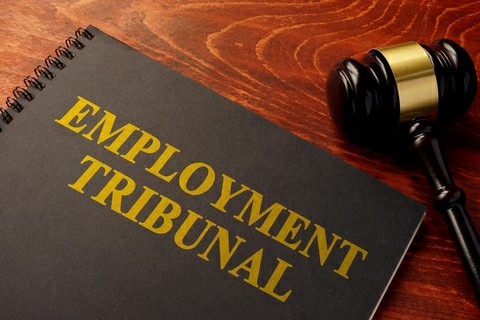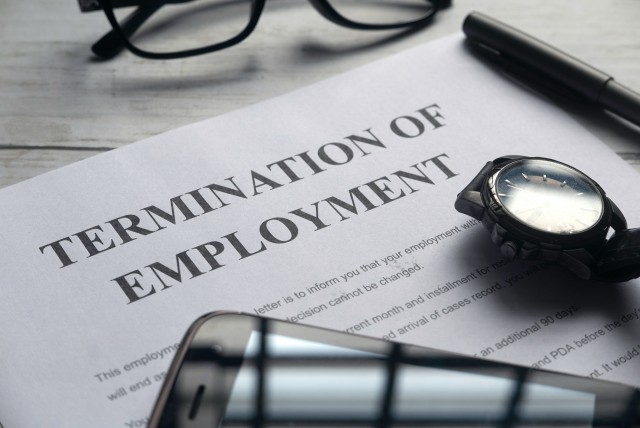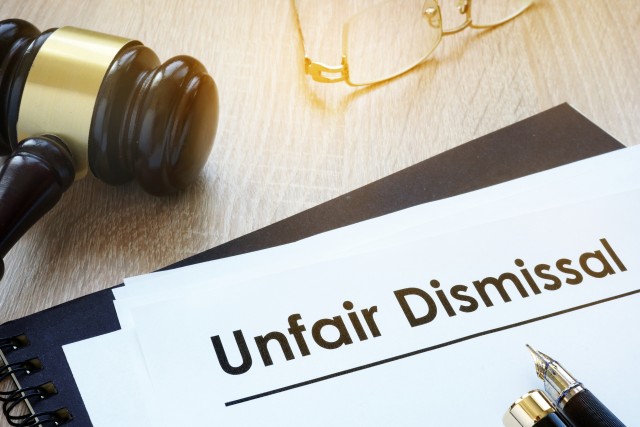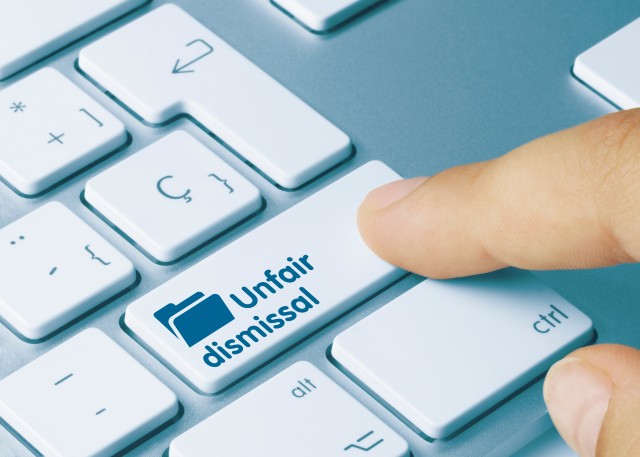
Dismissing an Employee with Less Than 2 Years Service
Dismissing an employee is never an easy task but it can be particularly challenging when dealing with an employee who has less than 2 years of service under their belt. As an employer, business owner or manager, it is crucial to understand the legal implications surrounding such dismissals as well as the best practices to ensure you are making fair, informed decisions. In this comprehensive guide we will explore the key considerations and steps you need to take when dismissing an employee with less than 2 years of service focusing on employment rights, fair reasons for dismissal, potential risks, and how to navigate the process in a legally compliant manner. Our goal is to provide you with a trustworthy resource that will help you make the right decisions for your business while minimizing any potential risks associated with employee dismissals.
Overview of Employment Rights for Employees with Less Than 2 Years Service
Before diving into the dismissal process it’s important to have a basic understanding of the employment rights for employees with less than 2 years of service. In the UK the 2-year service mark holds significant weight in terms of employment rights and protections. Once an employee has completed 2 years of continuous service with an employer they become eligible for additional rights including protection from unfair dismissal.
Employment Rights
However, employees with less than 2 years of service still have certain employment rights such as the right to receive a written statement of employment particulars, the right to be paid at least the national minimum wage, and the right to paid annual leave. It is essential to be aware of these rights to ensure compliance with employment law.
While employees with less than 2 years of service do not have the same level of protection against automatic unfair dismissal as those with more than 2 years of service, they still have some protections in place. For instance, they are protected from dismissal for reasons that would be considered automatically unfair, such as discrimination or whistleblowing.
Employer Take Note
As an employer, it is crucial to understand that just because an employee has not yet reached the 2-year service mark, it does not mean you can dismiss them without cause or without following a proper procedure. In fact, from a legal position, dismissing an employee with less than 2 years of service without a fair reason or a fair procedure could still lead to potential legal risks and consequences.
In the following sections, we will delve more deeply into fair reasons for dismissal, the importance of following a fair procedure, exceptions to the 2-year service rule, and best practices for dismissing an employee with less than 2 years of service. This knowledge will help you navigate the dismissal process while minimizing potential risks and ensuring that you treat your employees fairly and in accordance with the law.
Fair Reasons for Dismissal
Under the Employment Rights Act 1996, there are five potentially fair reasons for dismissal. These reasons apply to all employees, regardless of their length of service. Understanding these fair reasons is essential when considering dismissing an employee with less than 2 years of service:
Capability:
This refers to an employee’s ability to perform their job, which can include their skills, qualifications, and health. If an employee is unable to fulfill their role due to a lack of capability, it may be a fair reason for dismissal.
Conduct:
Dismissal may be justified if an employee has displayed misconduct, such as theft, dishonesty, harassment, or insubordination. It is important to follow a fair disciplinary procedure and ensure that the misconduct is properly investigated.
Redundancy:
If the employee’s position is no longer required due to a business restructure, cessation of business, or a reduced need for employees to carry out a specific type of work, redundancy could be a fair reason to dismiss an employee for dismissal.
Breach of a statutory duty or restriction:
If employing an individual would contravene a law or regulation, dismissal may be considered fair. For example, dismissing an employee who has lost their driving license when driving is an essential part of their job.
Some other substantial reason (SOSR):
This is a catch-all category for fair reasons that do not fall under the other four categories. It can include situations such as a breakdown in the working relationship or an employee’s refusal to accept reasonable changes to the terms and conditions of their employment contract. However, it’s important to ensure that the reason is substantial and justifiable.
When dismissing an employee with less than 2 years of service, it is crucial to have a clear, fair reason that falls within one of these categories. Being able to demonstrate that the dismissal was based on a fair reason can help protect your business from potential legal risks.
The Importance of Following a Fair Procedure
Even if you have a fair reason for dismissing an employee with less than 2 years of service, it is essential to follow a fair procedure. The ACAS Code of Practice on disciplinary and grievance procedures provides guidance on the steps employers should take to ensure a fair dismissal process. Though not legally binding, courts and tribunals take the ACAS Code into account when considering the fairness of a dismissal.
Key steps to follow in a fair dismissal procedure include:
Informing the employee:
Clearly communicate the reason for their dismissal and provide them with an opportunity to respond. This should be done in writing and in a timely manner.
Holding a meeting:
Arrange a formal meeting with the employee, allowing them the right to be accompanied by a colleague or trade union representative. During the meeting, discuss the reason for dismissal and give the employee a chance to present their case.
Considering the employee’s response:
After hearing the employee’s side, take time to consider their response before making a final decision.
Right to appeal:
If the employee is unhappy with the decision, they should be given the opportunity to appeal. This should be conducted by a different manager, if possible, to ensure impartiality.
Following a fair procedure when dismissing an employee with less than 2 years of service not only demonstrates good employment practices but also helps protect your business from potential legal disputes and claims. Remember that even though employees with less than 2 years of service may not be protected from unfair dismissal in the same way as those with longer service, they can still bring other claims, such as discrimination or whistleblowing. By adhering to a fair and transparent dismissal process you minimize the risk of facing these claims and help to maintain good employee relations and a positive working environment.
In addition to the ACAS Code of Practice it’s also essential to follow any internal disciplinary policies and procedures your company may have in place. These policies should be accessible to all employees and regularly reviewed to ensure they remain up-to-date and compliant with current legislation.
In summary, when dismissing an employee with less than 2 years of service it is crucial to have a fair reason for dismissal and follow a fair procedure. By doing so you not only protect your business from potential legal risks, but also demonstrate a commitment to treating your employees fairly and fostering a positive working environment.
Exceptions to the 2-Year Service Rule
While employees with less than 2 years of service generally do not have the same protection against automatic unfair dismissal claims as those with longer service, there are exceptions to this rule. In certain circumstances, employees are protected from unfair dismissal regardless of their length of service. Some examples of these exceptions include:
Discrimination:
Dismissal due to an employee’s age, disability, gender reassignment, marriage or civil partnership, pregnancy or maternity, race, religion or belief, sex, or sexual orientation is considered automatically unfair, regardless of their length of service.
Whistleblowing:
Employees who report wrongdoing, such as criminal offences, health and safety violations, gross misconduct, or environmental damage, are protected from dismissal related to their whistleblowing activities.
Health and Safety:
Dismissal of an employee for raising health and safety concerns or participating in related activities, such as being a health and safety representative, is automatically unfair.
Trade Union Activities:
Employees cannot be dismissed for participating in trade union activities or joining a trade union.
Family-related Leave:
Dismissal due to an employee taking or requesting maternity, paternity, adoption, or shared parental leave is automatically unfair.
As an employer, it is vital to be aware of these exceptions and ensure that any dismissal is not based on unlawful discrimination or on one of these protected grounds.
Risks of Unfair Dismissal Claims
If you do not follow a fair procedure or have a valid reason for dismissing an employee with less than 2 years of service, you may expose your business to potential legal risks and consequences. Even though these employees do not have the same level of protection against unfair dismissal, they can still bring claims for automatically unfair reasons or other grounds, such as discrimination or whistleblowing.
Failing to properly handle the dismissal process can lead to various negative outcomes for your business:
Financial implications:
If an employee successfully brings a claim against your business, you may be required to pay compensation, which can include back pay, front pay, and potentially additional damages. Legal fees and other costs associated with defending against such claims can also be significant.
Reputational risks:
Unfair or wrongful dismissal claims can damage your business’s reputation making it difficult to attract and retain talented employees and potentially affect your relationships with customers and other stakeholders.
Morale and productivity:
Unfair dismissal claims can negatively impact the morale and productivity of your remaining employees as they may feel uncertain about their job security and question the fairness of your employment practices.
To minimize these risks it is crucial to ensure that you have a fair reason for dismissing an employee with less than 2 years of service and follow a proper dismissal procedure. By doing so you protect your business from potential legal disputes and help maintain a positive and fair working environment.
Best Practices for Dismissing an Employee with Less Than 2 Years Service
To ensure that you handle the dismissal process fairly and legally, consider the following best practices when dismissing an employee with less than 2 years of service:
Be proactive:
Address any performance or conduct issues as early as possible through regular feedback and performance evaluations. This approach can help you resolve issues before they escalate and potentially avoid the need for dismissal.
Communicate effectively:
Keep the lines of communication open and transparent throughout the dismissal process. Ensure that the employee is aware of the reason for their dismissal and has the opportunity to respond.
Document everything:
Maintain thorough documentation of any performance or conduct issues, as well as any steps taken to address these issues, including meetings, warnings, and any improvement plans. This documentation can help protect your business in the event of future claims.
Follow your internal policies:
Adhere to your company’s disciplinary and dismissal policies and procedures, as well as the ACAS Code of Practice, to ensure a fair and consistent process.
Be empathetic:
Dismissing an employee is a difficult and emotional experience for both parties. Treat the employee with respect and empathy throughout the process, and provide support where appropriate, such as offering outplacement services or assistance in finding alternative employment.
Settlement Agreements
In some cases a settlement agreement may be a suitable option when dismissing an employee with less than 2 years of service. A settlement agreement is a legally binding contract between the employer and employee that outlines the terms of the employee’s departure, including any financial compensation and other agreed-upon terms. In exchange, the employee waives their right to bring claims against the employer related to their employment or dismissal.
Settlement agreements can offer several benefits in the dismissal process:
Minimizing risks:
By agreeing to a settlement, both parties can avoid the uncertainty, costs, and potential reputational damage associated with legal disputes.
Confidentiality:
Settlement agreements can include confidentiality clauses, ensuring that the details of the dismissal and settlement remain private.
Faster resolution:
Settlement agreements can help resolve disputes more quickly than going through a formal dismissal procedure or litigation.
However, there are key considerations for employers when proposing and negotiating settlement agreements:
Legal advice:
Both the employer and the employee should seek independent legal advice before entering into a settlement agreement. This is a legal requirement for the agreement to be valid.
Cost-benefit analysis:
Consider the costs of offering a settlement, including the financial compensation and legal fees, against the potential risks and costs of not settling, such as defending against a claim.
Negotiation:
Be prepared for negotiations, as employees may not always accept the initial settlement offer. Approach negotiations with a clear understanding of your desired outcome and the potential implications of any concessions.
In summary, when dismissing an employee with less than 2 years of service, following best practices and considering options such as settlement agreements can help protect your business from potential legal risks and ensure a fair, transparent, and legally compliant process.
Documentation and Record Keeping
Maintaining thorough documentation throughout the dismissal process is essential for protecting your business in the event of future claims. Accurate and comprehensive records can serve as evidence of your efforts to address performance or conduct issues fairly and in accordance with the law. Consider the following tips for effective record keeping:
Document performance or conduct issues: Keep records of any incidents or concerns related to the employee’s performance or behaviour, including details of the issue, any actions taken to address the issue, and the employee’s response.
Record meetings and discussions: Take detailed notes during meetings or discussions about the dismissal process, including dates, attendees, and key points discussed. Ensure that both parties have access to these records and an opportunity to clarify any misunderstandings.
Maintain a dismissal file: Create a dedicated file for each dismissal, containing all relevant documentation, including performance evaluations, disciplinary records, meeting notes, correspondence, and any settlement agreements.
Store records securely: Keep dismissal records confidential and secure, ensuring that only authorized personnel have access to them.
Seeking Legal Advice
When considering dismissing an employee with less than 2 years of service, it is essential to seek expert legal advice to ensure compliance with employment law and minimize potential risks. Engaging a reputable employment lawyer can provide valuable guidance on:
Assessing the legality and fairness of the dismissal
Drafting or reviewing documentation, such as dismissal letters and settlement agreements
Navigating the dismissal process, including disciplinary and appeal procedures
Representing your business in negotiations, mediations, or litigation, if necessary
To find a suitable employment lawyer, ask for recommendations from colleagues, peers, or professional associations, and research prospective lawyers’ experience, reputation, and expertise in employment law.
Conclusion:
Dismissing an employee with less than 2 years of service can be a challenging and complex process. By understanding employment rights, fair reasons for dismissal, potential risks, and the importance of following a fair procedure, you can navigate the process in a legally compliant manner. Adhering to best practices, maintaining thorough documentation, considering settlement agreements, and seeking legal advice can help protect your business from potential legal disputes and ensure that you treat your employees fairly.
As an employer, business owner, or manager, it is essential to stay informed of the latest developments in employment law and continually review your internal policies and procedures to maintain compliance. By doing so, you can foster a positive working environment and minimize potential risks associated with employee dismissals, ultimately contributing to the long-term success of your business.
Call John Bloor at EBS Law on 01625 87 4400 if you are an employer and need free Employment Law Advice.






